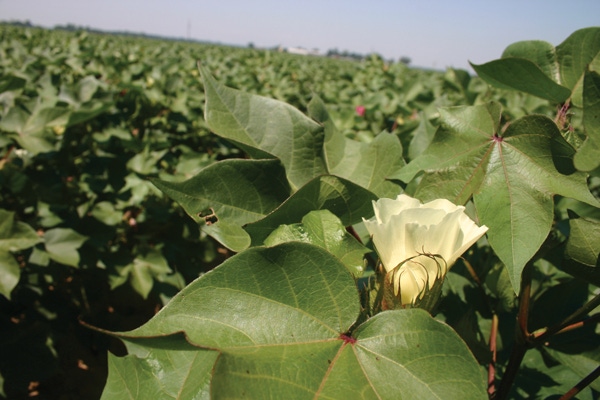
Subsurface drip irrigation may have a place in Southeast cotton production.Irrigation has increased significantly in Georgia since the 1970s with from 40 percent to 50 percent of the state’s cotton acreage now under irrigation.Yield favored the three-foot widths but was “not enough to justify the extra cost.

Subsurface drip irrigation may have a place in Southeast cotton production.
“Water is one of the most limiting factors in cotton production in Georgia,” says Jared Whitaker, University of Georgia department of crop and soil sciences, Statesboro.
Whitaker, speaking at the recent Beltwide Cotton Conferences in Orlando, said irrigation has increased significantly in Georgia since the 1970s with from 40 percent to 50 percent of the state’s cotton acreage now under irrigation. But most of that is from overhead sprinkler systems.
“We have some issues with overhead irrigation,” Whitaker said. “We lose water through drift and evapotranspiration. Loss can range from 10 percent to 40 percent. Also, we see some pollen sensitivity from water falling onto the flower.”
He said subsurface drip irrigation (SSDI) “has worked elsewhere and is a more efficient means of irrigation. SSDI reduces evaporation losses and provides more timely application and in smaller increments.
He’s evaluating SSDI irrigation, comparing it to overhead application techniques to determine if it has a fit in Southeastern cotton production. It seems to offer promise.
He evaluated dryland production, SSDI and overhead irrigation systems.
“We averaged 37 percent water savings with SSDI,” he said.
He recorded “various responses” from lint yield evaluations. Back in 2005, a late season hurricane dumped a lot of water on much of Georgia’s cotton acreage and SSDI systems were not significantly different than other systems.
In other studies, he said SSDI “made more cotton lower in the canopy than overhead irrigation. Gin turnout was also a little higher.”
He compiled additional data on SSDI in 2011. “But we have to look at the economics closely and determine how much the system costs and how long it will last. We also want to explore irrigation scheduling and variety effects.”
He said cotton water demand tables show the crop needs one inch per week until bloom, then two inches per week to the fourth week of bloom. Then demands tapers off.
He said yields with SSDI in 2005 were “as good as or better than,” other systems. “In 2011 we produced positive benefits.” He said studies into more efficient use through better timing followed the checkbook method—replacing what the crop removes.
“SSDI will be more efficient,” Whitaker said. “The cost and longevity of the system are still questions but it does seem to be a viable option for Georgia.”
Ronald Sorensen, with the USDA-ARS National Peanut Lab in Dawson, Ga., has looked at drip irrigation in Georgia and on the Texas High Plains. “Cost depends on the size of the field,” he said. “Also, moving moisture up for germination is an issue with SSDI.”
He’s also looking at yield and grade differences with various application rates, including 50 percent, 75 percent and 100 percent of moisture demand. Crop rotation options are also in the study.
Rotation schemes include: cotton and peanut; cotton, milo, peanut; and cotton, milo, milo and peanut.
During a dry year application followed ET curves fairly closely, “until late rainfall. In a high rainfall year, we don’t irrigate much.”
Four of seven years the studies showed a significant difference between irrigation amounts with 50 percent typically the lowest production. But 75 percent irrigation was better than 100 percent, Sorensen said. “In all years, 75 percent irrigation tended to produce higher yields than either 50 percent or 100 percent. We think we can save that extra 25 percent.”
He studied lateral spacing differences, testing three-foot and six-foot widths between irrigation lines. “We did not see a lot of difference between the three-foot and the six-foot spacing.”
He said yield favored the three-foot widths but was “not enough to justify the extra cost.”
He found little difference with cotton yields from rotation but did note an advantage for peanuts with longer rotation intervals.
In 3 of 7 years, he noted a difference in micronaire with SSDI “but no trend. We did not see a lot of grade factor differences with SSDI.”
Sorensen said the water savings also translates into fuel savings since producers will not have to pump as much water during the season to irrigate cotton to 75 percent of optimum.
He said possible disadvantages of SSDI systems include the high initial cost of installation, longevity of the lines, the need for clean water, moving moisture up to seed and managing for quality. During his trials, he flushed the system monthly.
About the Author(s)
You May Also Like





